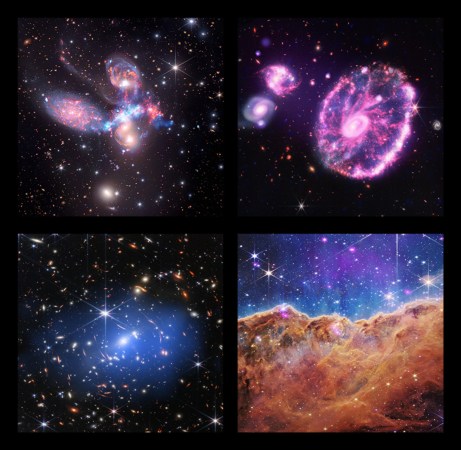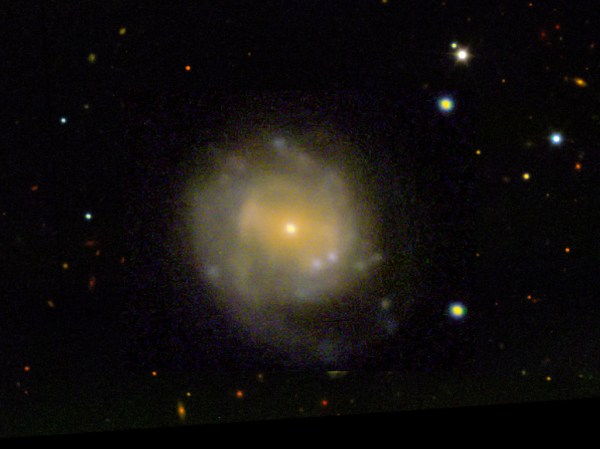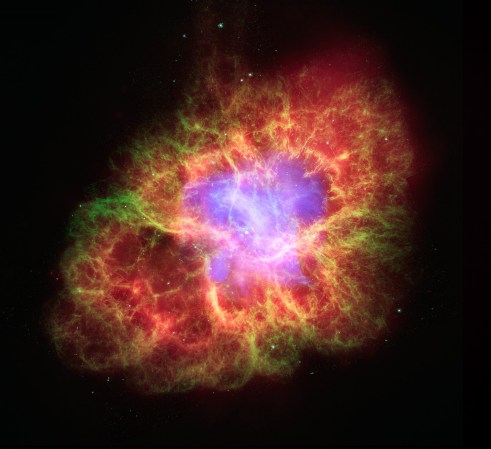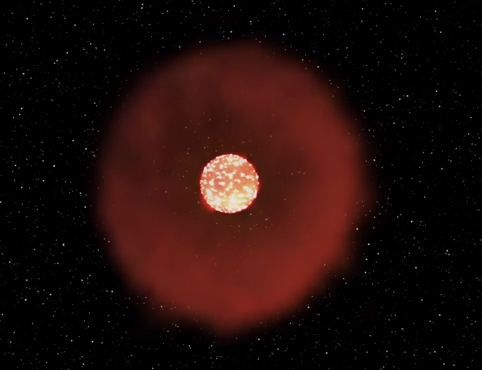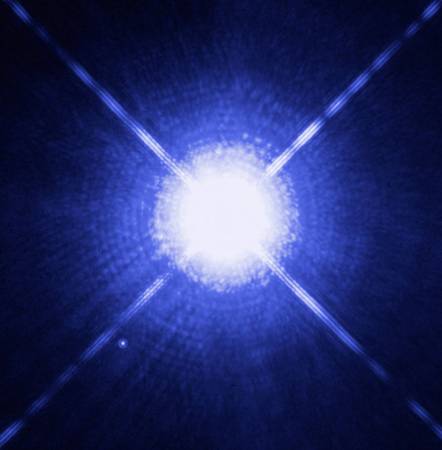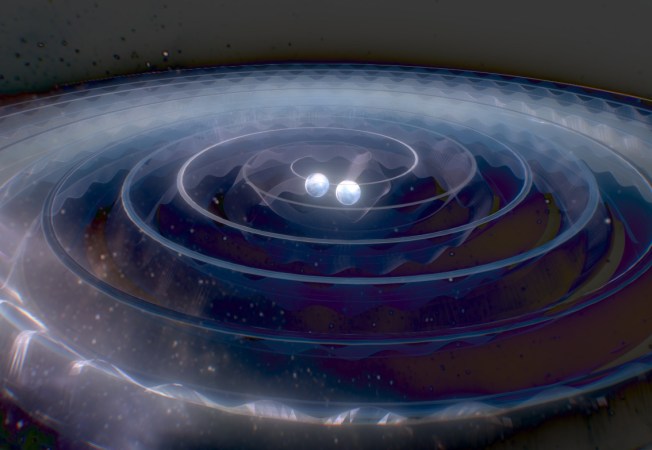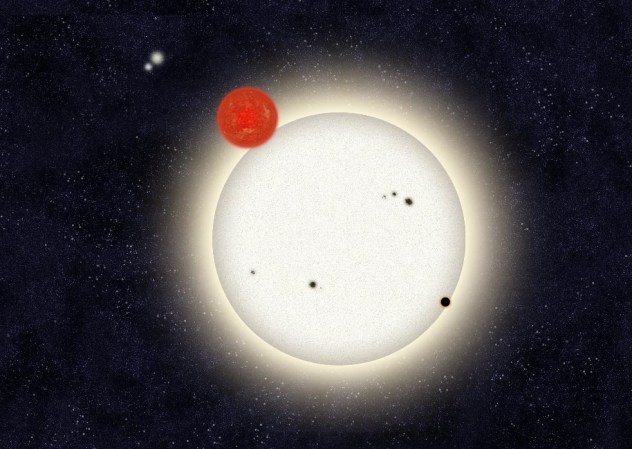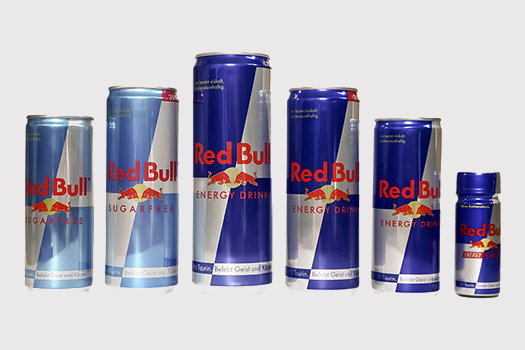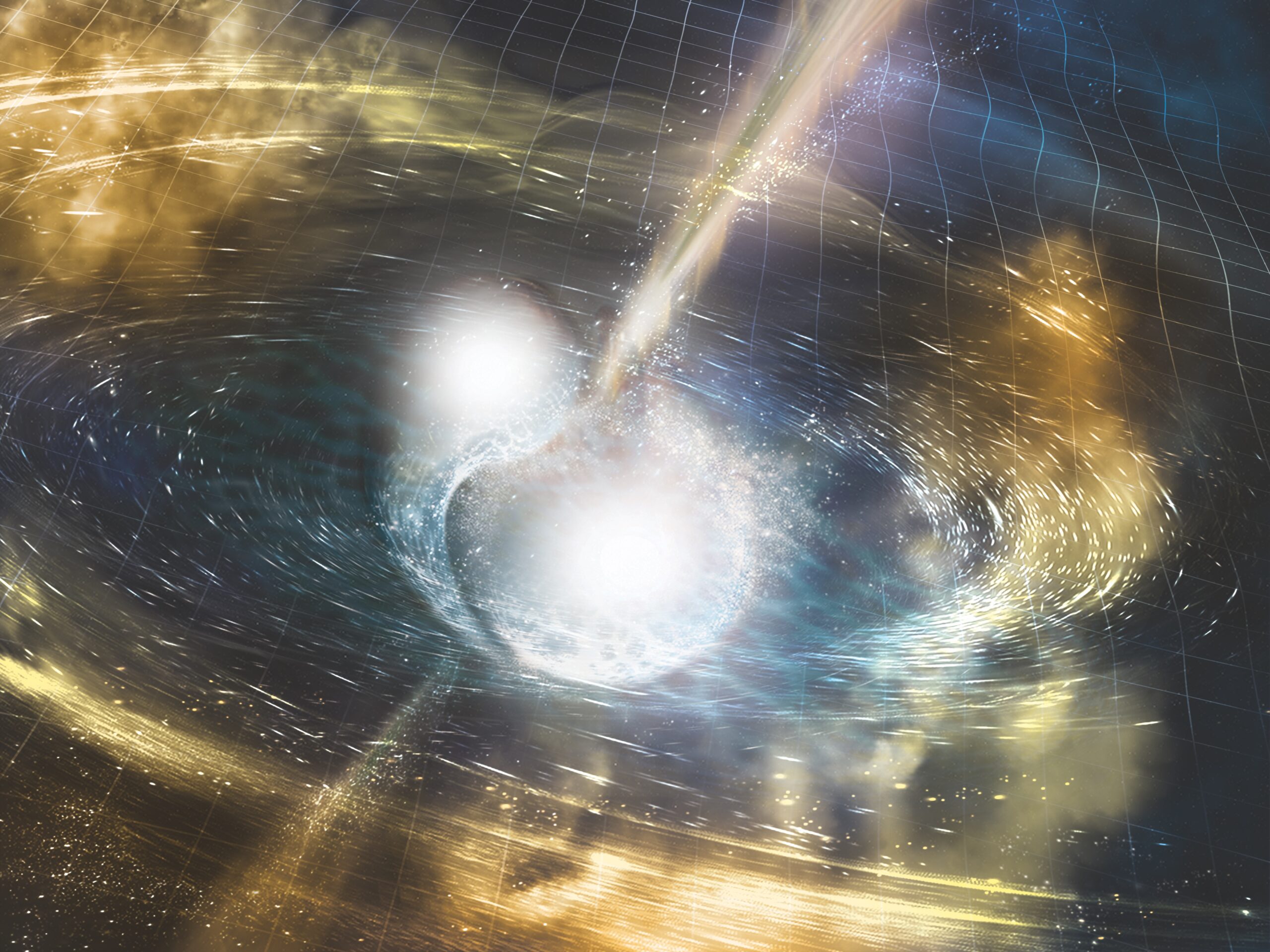

For the first time ever, humans have observed light and gravitational waves from the same event, a neutron star collision 130 million light years away. Thanks to advance warning from the Laser Interferometer Gravitational-Wave Observatory (LIGO), roughly 70 observatories from every continent on Earth, including Antarctica, managed to tune in to watch the merger. Based on this “multi-messenger” event, thousands of scientists are now making breakthroughs about the behavior of neutron stars and the origin of elements like gold and uranium.
When enormously heavy objects, such as black holes, smash into each other, they release enough energy to deform the fabric of spacetime, the same way tossing a stone into a pool of water can produce ripples. The twin LIGO detectors in Hanford, Washington and Livingston, Louisiana, which keep watch for these wave signals, have already detected several black hole collisions, an achievement worthy of this year’s Nobel Prize. Most recently, Italy’s Virgo detector also began picking up gravitational waves.
On August 17, LIGO received a signal, dubbed GW170817, unlike any it had detected before. Researchers published the full results in Physical Review Letters. While the black hole mergers had produced brief chirps in limited sets of frequencies, this signal lasted 100 seconds and spread through the entire frequency range. Scientists realized the objects that had produced GW170817 were much smaller than black holes—they had to be neutron stars.
What’s a neutron star?
A neutron star weighs slightly more than our Sun, but crams that mass into an object fewer than 12 miles (less than the length of Manhattan) across. Because they’re so incredibly dense—one teaspoon of neutron star would weigh about six billion tons—the matter in these stars doesn’t look like the familiar atoms that make up all the stuff on Earth. Instead, neutron stars contain the particles you’d normally find in an atom’s nucleus, a densely-packed crowd of neutrons (hence the name) with a smattering of protons mixed in.
Unlike black holes, neutron stars create a visible spectacle when they collide: Theorists have predicted that they would shoot out jets of gamma rays and hurl glowing matter into space. So when LIGO heard GW170817, its researchers alerted astronomers all over the globe to start scanning the skies. Thanks to Virgo, they could also tell observatories roughly where to look. The signal that reached each detector had a slightly different strength and arrived at a slightly different time, and researchers could analyze these disparities to narrow down the area of space where the waves must have originated: a 30-square-degree region visible from Earth’s southern hemisphere.
NASA’s Fermi Space Telescope picked up a tell-tale burst of gamma rays. Optical telescopes in Chile caught the merger spewing jets of molten matter, allowing researchers to pinpoint the exact galaxy where the neutron stars had collided: NGC4993. X-ray telescopes, radio telescopes, infrared and ultraviolet telescopes, even a neutrino detector at the South Pole—just about every observatory that could view the southern hemisphere tried to catch sight of this merger.
“There’s probably never been an event so closely monitored by so many telescopes,” Columbia University astrophysicist Brian Metzger told Popular Science.
That wide variety of eyes on the sky fulfills one of the most valuable promises of gravitational wave astronomy: multi-messenger events. By watching the neutron-star merger through gravitational waves, gamma rays, and the full electromagnetic spectrum, researchers are already making breakthroughs about how neutron stars, as well as many of the elements in the universe, formed. As they continue to analyze their data, more papers are sure to follow.
“We’re just beginning to explore the gravitational universe,” David Reitze, executive director of the LIGO Laboratory at Caltech, told Popular Science. “It’s very likely that we’re going to see something that no one anticipated, that really shakes the paradigms of established scientific theory.” (Reitze’s number-one goal: “Proving Einstein wrong, with all due respect, would be a big deal. We might be able to see cracks in the edifice of the theory of general relativity. That may give us a clue for how to bring general relativity and quantum theory together in an uber-theory, a theory of everything.”)
In the meantime, here are a few of the discoveries that scientists are already celebrating.
First non-black-hole gravitational waves
Scientists are buzzing about the fact that this marks the first-ever multi-messenger event—an astronomical event observed using multiple kinds of signals—to involve gravitational waves. That hype is well-deserved; after all, this represents the beginning of a new type of astronomy. But in the excitement, don’t forget that this also marks the first-ever detection of gravitational waves from a neutron star merger.
That means this collision was the first gravitational-wave event for which multi-messenger observations were even possible (black holes don’t produce light). Beyond that, it gives researchers a better sense of how often neutron-star mergers occur—relatively speaking. Based on this finding, LIGO could expect to see anywhere from one to two neutron star mergers per year to one per week.
Solving short gamma ray bursts
A mere two seconds after the collision’s gravitational waves reached Earth, NASA’s Fermi Space Telescope detected a short burst of gamma rays. Researchers first began detecting gamma ray bursts in the 1960s, and while theories suggested that neutron star collisions might produce these signals, researchers couldn’t prove it—until now.
“The proof could only come from gravitational waves,” Northwestern University astrophysicist Vicky Kalogera, a member of the LIGO Scientific Collaboration, told Popular Science. “Fifty years after the first detection, we finally have the answer to this long-standing mystery, and it gives us goosebumps to have solved it.”
Even better, from an astrophysicist’s point of view, is the fact that the answer to this particular mystery has spawned new questions. Specifically, the gamma rays were unusually faint, particularly for a signal that came from a relatively close source.
“This is a short gamma ray burst,” Kalogera says, “but it’s not your vanilla short gamma ray burst.” To explain the lack of strength, researchers will have to build new models of how neutron stars produce gamma rays—and keep an eye out for more collisions to study.
Pinpointing the galaxy of origin
Although Earth could pick up a gamma ray burst immediately after the gravitational waves hit, optical telescopes had to wait a few hours. LIGO’s analysis indicated that the neutron star merger would be visible only from the southern hemisphere—which meant telescopes there had to wait for darkness to fall.
Researchers across the globe began communicating with those telescopes, directing them where to look and analyzing the images they produced. At last, the Swope telescope at Chile’s Las Campanas observatory took an image with the tell-tale indicators. Then the team, led by Ryan Foley of University of California Santa Cruz, had to confirm that it wasn’t a false alarm.
“If you’re an explorer trying to find a new island, and you see some land mass off in the distance,” Foley told Popular Science, “you want to make sure it’s not a peninsula or an already-discovered area.”
Finally, his team officially announced that they had located the neutron stars’ home in galaxy NGC4993—followed minutes later by another team’s announcement. In fact, multiple teams had been working feverishly to track the signal through optical telescopes, and they announced their discoveries (all agreed on the location in NGC4993) within minutes of each other.
“The whole thing was extremely exciting, but in the moment, you don’t have much time to sit back and reflect,” Foley says. “You buckle down and focus on the task at hand.”
Once researchers know the location of this binary system, they could learn more about what it had been doing before the merger. For example, NASA’s Hubble Space Telescope had observed this particular galaxy only a few months earlier.
“Knowing the properties of that galaxy let us uncover the history of the system,” Kalogera says. “This binary neutron star had a whirlwind tour of its own galaxy before it found itself merging.”
In addition to galactic history, optical telescopes can record the spectrum of light the merger produces, and how that spectrum changes over time. Which helps build a better picture of exactly what happens when two neutron stars collide.
Smashing neutron stars
Theorists like Metzger have predicted what will happen during a neutron star collision: Tidal forces will send the outer layers of the stars flying off into space, while the material that got sandwiched between them superheats and then spews out like toothpaste squeezed out of a tube.
This flying matter is both extremely hot and extremely radioactive. While you’d expect the heat to fade as the material expands outward, moving at a few tenths the speed of light, the radioactivity keeps temperatures high. Eventually, the material begins to glow, a phenomenon dubbed a kilonova.
The optical telescopes caught this merger early enough to watch that kilonova grow and develop over time. And these observations match up well with the theorists’ predictions.
“It’s a triumph for theoretical astrophysics,” Metzger says. “I was extremely excited to see nature lift the curtain and have this event so resemble what we had been predicting and thinking about in an abstract and data-starved way.”
Origin of heavy elements
That wasn’t the only theoretical triumph. A neutron star merger doesn’t just produce a glow. Remember, neutron stars are made up of neutrons and protons, with the former about 10 times as numerous as the latter. When this material hurtles into the void, it finally has room to start forming atoms—specifically, the atoms of heavy elements such as gold, platinum, and uranium.
In fact, Metzger says, “You’re able to produce most of the bottom of the periodic table.” He estimates that this one neutron star collision produced about 100 Earth masses worth of gold, a few hundred worth of platinum, and tens of Earths worth of uranium.
Researchers had already predicted that many of the elements heavier than iron could have been forged in the smash-up of neutron star mergers. But this observation confirms that roughly half of these elements owe their existence to neutron star collisions.







